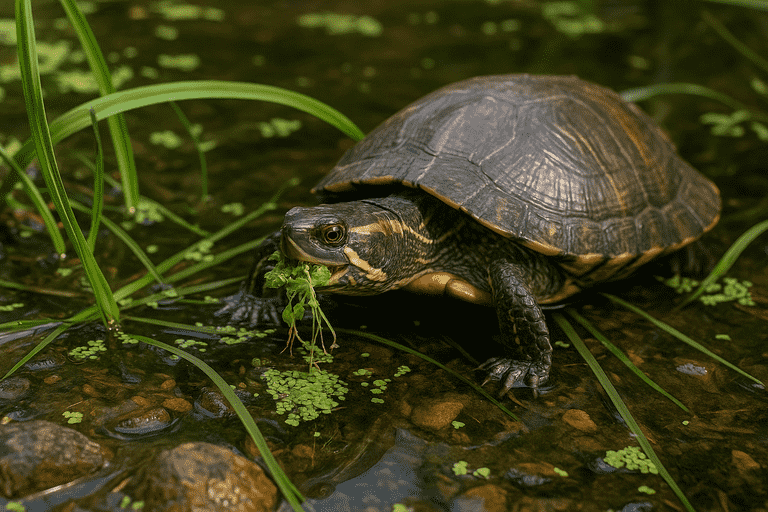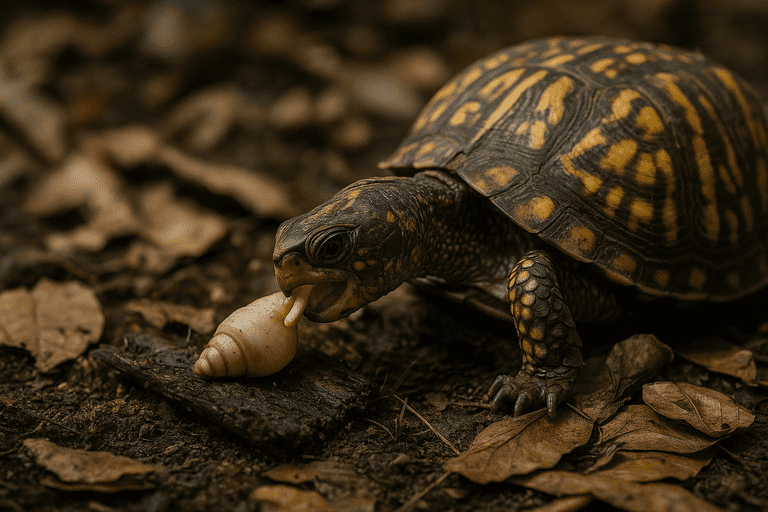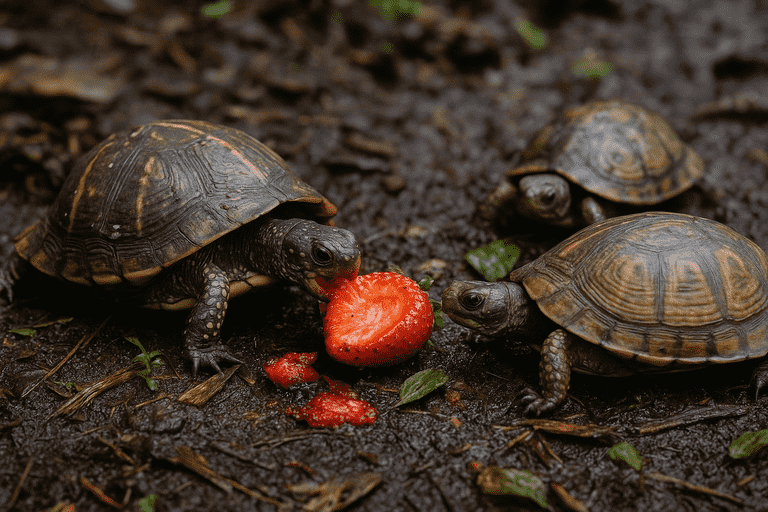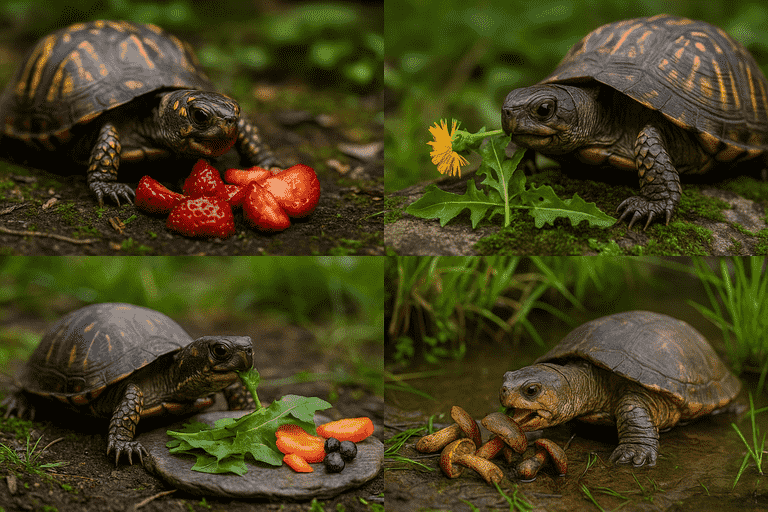Turtles in their natural habitat consume a diverse range of food sources that reflect the richness of their ecosystems. Observing wild turtle food habits helps pet owners and researchers replicate a more authentic and nutritious diet in captivity. For instance, turtles in the wild often eat insects, aquatic plants, small fish, and even carrion.
In addition, their diet shifts with seasons, availability, and environment. Therefore, understanding what wild turtles eat provides insight into their overall health and longevity.
The Nutritional Value in Natural Habitats
Turtles benefit greatly from foraging in clean, biodiverse environments. Wild turtles consume a combination of protein, fiber, and calcium through varied food sources. Consequently, wild turtle food offers more complete and adaptive nutrition than standard pellet diets.
For example, aquatic turtles feed on pond vegetation and live prey, which promotes muscle activity and mental stimulation. In addition, the constant movement required to hunt or graze strengthens their immune systems naturally.

How to Replicate Wild Turtle Food at Home
While it’s impossible to fully mimic nature indoors, owners can closely simulate the nutritional quality of wild turtle food. For example, feeding live insects such as crickets or mealworms introduces natural hunting behavior. Additionally, including dark leafy greens, aquatic plants, and occasional feeder fish creates a more balanced diet.
Why Wild Dog Food Salmon Is a Smart Nutritional Choice
Furthermore, varying food options reduces boredom and encourages healthy appetite patterns. Therefore, rotation and diversity are crucial when designing a home feeding plan that mirrors nature.
The Role of Environment in Access to Wild Turtle Food
Turtles living in diverse, unpolluted areas tend to have more access to essential nutrients. Clean water bodies rich in vegetation and insect life support a wider array of wild turtle food sources. In contrast, degraded habitats limit food choices and expose turtles to harmful toxins.
For instance, urban runoff often contaminates streams where turtles hunt. As a result, protecting natural environments directly affects their diet and survival. In addition, conservation efforts that restore habitats also reintroduce key food species.

Seasonal Changes That Influence Wild Turtle Diets
Like many animals, turtles adjust their feeding behavior based on seasonal availability. During spring and summer, they actively consume high-protein food like insects and fish. In the fall, many species focus on energy-rich plants or slow down their intake. This natural rhythm makes wild turtle food highly dynamic.
Wild Food as a Gateway to Self-Reliance and Natural Living
Understanding these cycles helps caretakers avoid overfeeding or offering the wrong types of nutrients at inappropriate times. Therefore, aligning domestic feeding schedules with natural patterns supports long-term health.
Comparing Commercial Diets With Wild Turtle Food
Although commercial pellets offer convenience, they rarely match the nutritional complexity of wild turtle food. Many processed products contain fillers or artificial preservatives that wild turtles never encounter. For instance, wild turtles often ingest calcium from bones or shells—something absent in typical packaged feeds.
Moreover, reliance on pellets can reduce activity levels and cognitive stimulation. Adding natural elements like water plants or live insects into the mix improves both nutrition and enrichment, leading to a healthier and more balanced turtle.

Common Foods Found in Freshwater Turtle Habitats
Freshwater turtles rely on a wide variety of food. This includes algae, snails, aquatic worms, duckweed, and decaying organic matter. Observing which types of wild turtle food different species prefer helps in building targeted care strategies.
Why Camping Gear Gifts Make the Perfect Present for Outdoor Lovers
For instance, red-eared sliders consume mostly plant matter as adults, while young sliders need more protein. Therefore, species-specific observations lead to better health outcomes and more appropriate care at different life stages.
Potential Dangers in Sourcing Wild Turtle Food
Despite the benefits, not all wild-sourced food is safe. Insects collected from treated lawns or roadside plants may carry pesticides. Therefore, those replicating wild turtle food should avoid feeding anything that hasn’t come from a controlled environment.
In addition, some aquatic plants or fish may carry parasites harmful to turtles. For safety, freeze prey items before feeding or rely on trusted sources that screen their livestock. Prioritizing safety ensures nutritional benefits without introducing risk.

Ethical Foraging and Environmental Impact
For those who wish to source wild food directly, ethics and environmental responsibility must guide every action. Taking too much from one location can upset the ecosystem and endanger future food availability for native species. When collecting wild turtle food, always practice sustainable harvesting.
In addition, follow local regulations regarding wildlife protection and invasive species control. A responsible approach supports both your turtle’s well-being and the health of the natural world around you.
Final Thoughts
Providing a natural diet enhances your turtle’s vitality, activity level, and overall lifespan. While not every keeper can access wild habitats, the principles behind wild turtle food can still guide responsible care. For instance, focusing on variety, freshness, and natural behavior contributes to mental and physical enrichment.
Therefore, whether you care for turtles in your backyard pond or an indoor terrarium, mimicking nature’s patterns leads to better results. The closer we get to nature, the better we support the creatures that rely on us.

